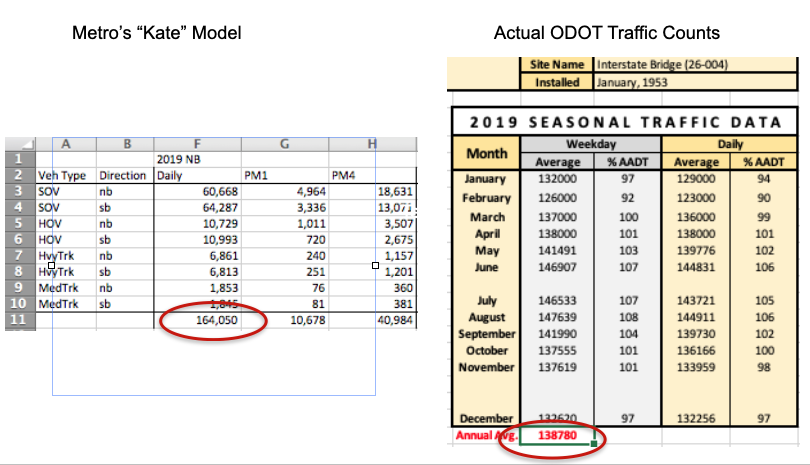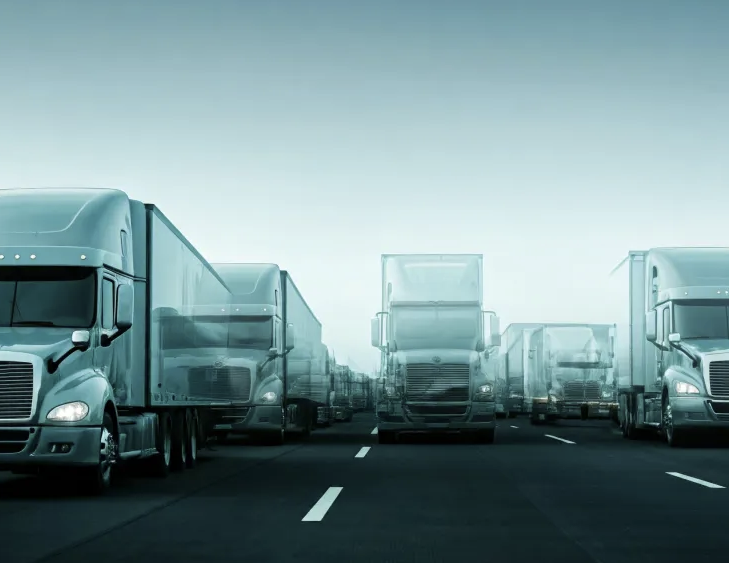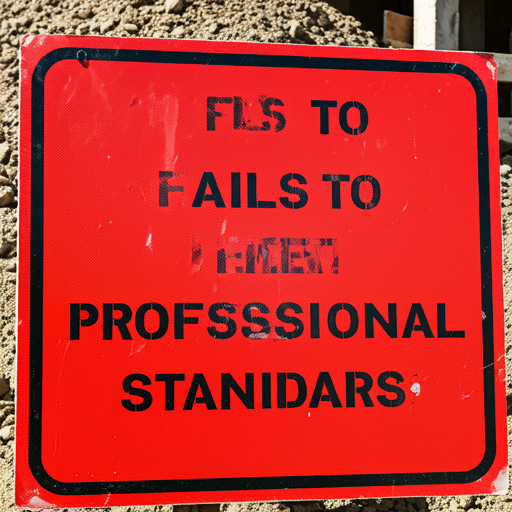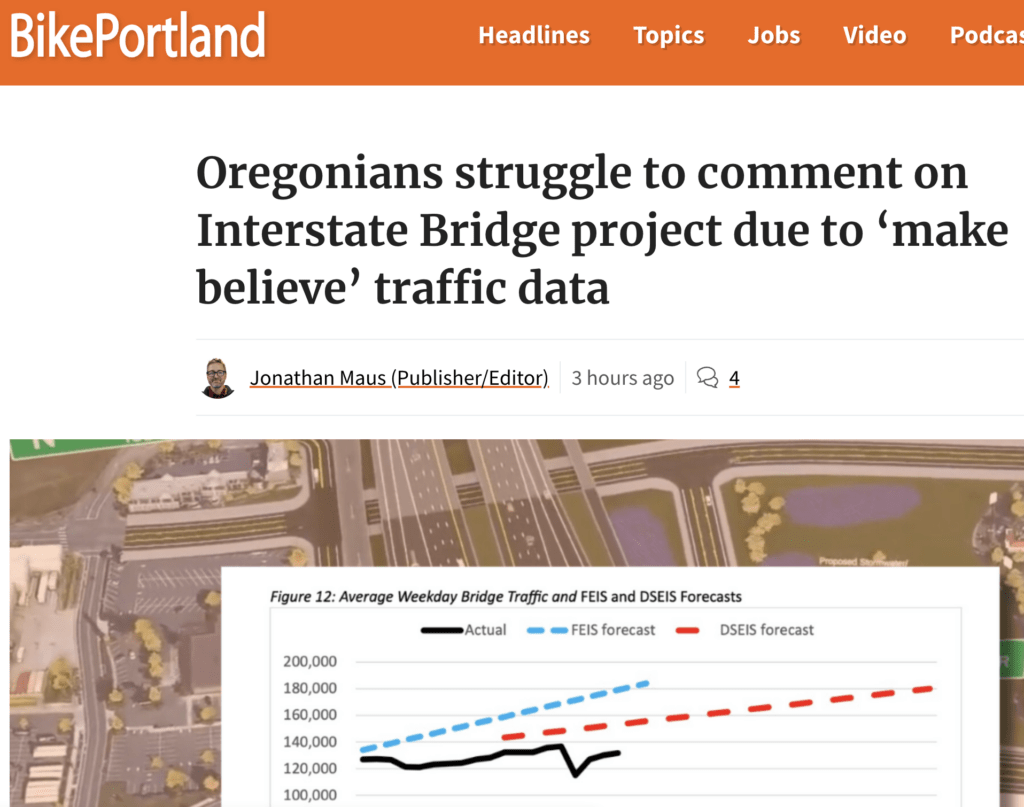What City Observatory Did This Week
There’s a critical flaw in the planning of the $7.5 billion Interstate Bridge project: Metro’s Kate travel demand model is wildly inflating I-5 traffic numbers. The model claims 164,050 vehicles crossed the I-5 bridges daily in 2019, but ODOT’s own traffic counters tell a drastically different story – only 138,780 vehicles actually used the bridge. Yet IBR is planning starts with this exaggerated level of traffic.
This isn’t just a minor statistical error. Metro’s model has conjured up 25,000 phantom vehicles – an 18% overstatement – that raises alarming questions about the entire project’s justification. How can taxpayers trust this same flawed model to predict future traffic patterns when it can’t even accurately count current vehicles? This inflated data also appears to violate federal law. The National Environmental Policy Act demands scientifically sound data for environmental impact statements. By using these phantom vehicles to justify the project’s size and urgency, planners are designing a $7.5 billion solution to an artificially inflated problem.
Inventing millions of phantom trucks to sell a wider bridge. The $7.5 billion plan to widen the I-5 bridges across the Columbia River is being sold, in part, based on claims that it will be used by millions of phantom trucks.
Metro’s biased truck modeling over-states current I-5 truck traffic by almost 70 percent: more than 2 million phantom trucks per year. Metro’s model says more than 17,000 trucks crossed the I-5 bridges each day in 2019; ODOT’s traffic data shows fewer than 10,000 truck crossings.
Truck traffic on the I-5 bridges is going down, and has declined almost half since 2005. Previous truck growth predictions for the CRC proved to be wildly wrong; the project’s EIS predicted truck traffic would grow more than 2 percent per year between 2005 and 2030; instead, it has declined at an annual rate of nearly 5 percent.
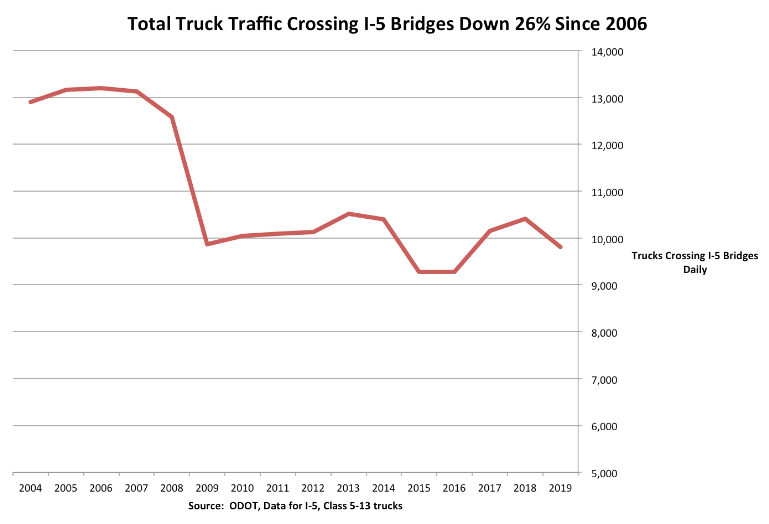
The decline isn’t an anomaly: statewide, Oregon truck freight volumes have declined 22 percent in the past 13 years, according to federal statistics.
Metro’s truck traffic forecast isn’t based on a model: It just appropriates a growth factor based on an unrealistic and inaccurate federal data series that US Department of Transportation officials concede is used for political purposes, not actual decision-making.
Interstate Bridge Replacement traffic modeling violates professional and federal standards. Traffic modeling is guided by a series of professional and administrative guidelines. In the case of the proposed $7.5 Interstate Bridge Replacement Project, IBR and Metro modelers did not follow or violated these guidelines in many ways as they prepared their traffic demand modeling. IBR modelers:
- Didn’t assess accuracy of their previous modeling
- Failed to calibrate their models to observed traffic levels
- Failed to accurately account for capacity constraints
- Ignored other models and more accurate data that contradicted their conclusions
- Failed to exhibit scientific integrity
- Failed to document their data and methods
- Failed to commission an independent review of their analysis
Each of these errors constitutes a violation of professional standards for traffic forecasting, and invalidates the claims made the the IBR Draft Supplemental Environmental Impact Statement.
Cooking the Books: How the IBR used “post-processing” to manually alter Metro travel forecasts to help sell the $7.5 billion Interstate Bridge project.
But what they’ve done, doesn’t meet the professional standards for post-processing—they cooked the books. Post-processing of Kate’s estimates isn’t needed because Kate produces detailed, daily and hourly estimates for the I-5 bridges
IBR made contradictory, and unexplained adjustments to Kate predictions: moving thousands of daily vehicles from I-5 to I-205, and hundreds of peak hour vehicles from I-205 to I-5.
IBR consultants failed to follow the accepted and required practice of fully documenting their so-called “post-processing” calculations. IBR traffic estimates can’t be replicated using the post-processing steps described in the SDEIS.
In the News
City Observatory’s analysis of fictional truck traffic and exaggerated estimates of truck travel growth are quoted in Bike Portland’s reporting on the Interstate Bridge Replacement Project. Bike Portland calls out the IBR team for selling the $7.5 billion project based on “make believe” traffic data.

